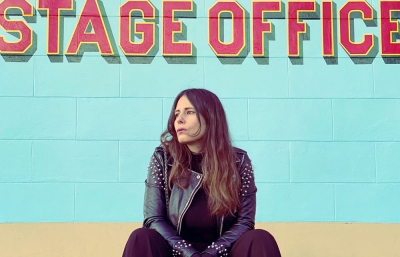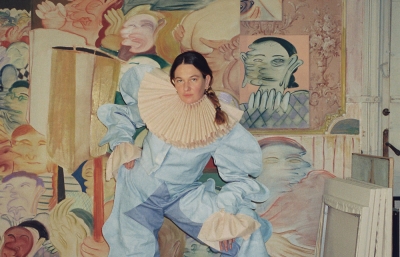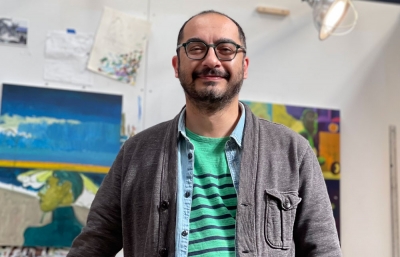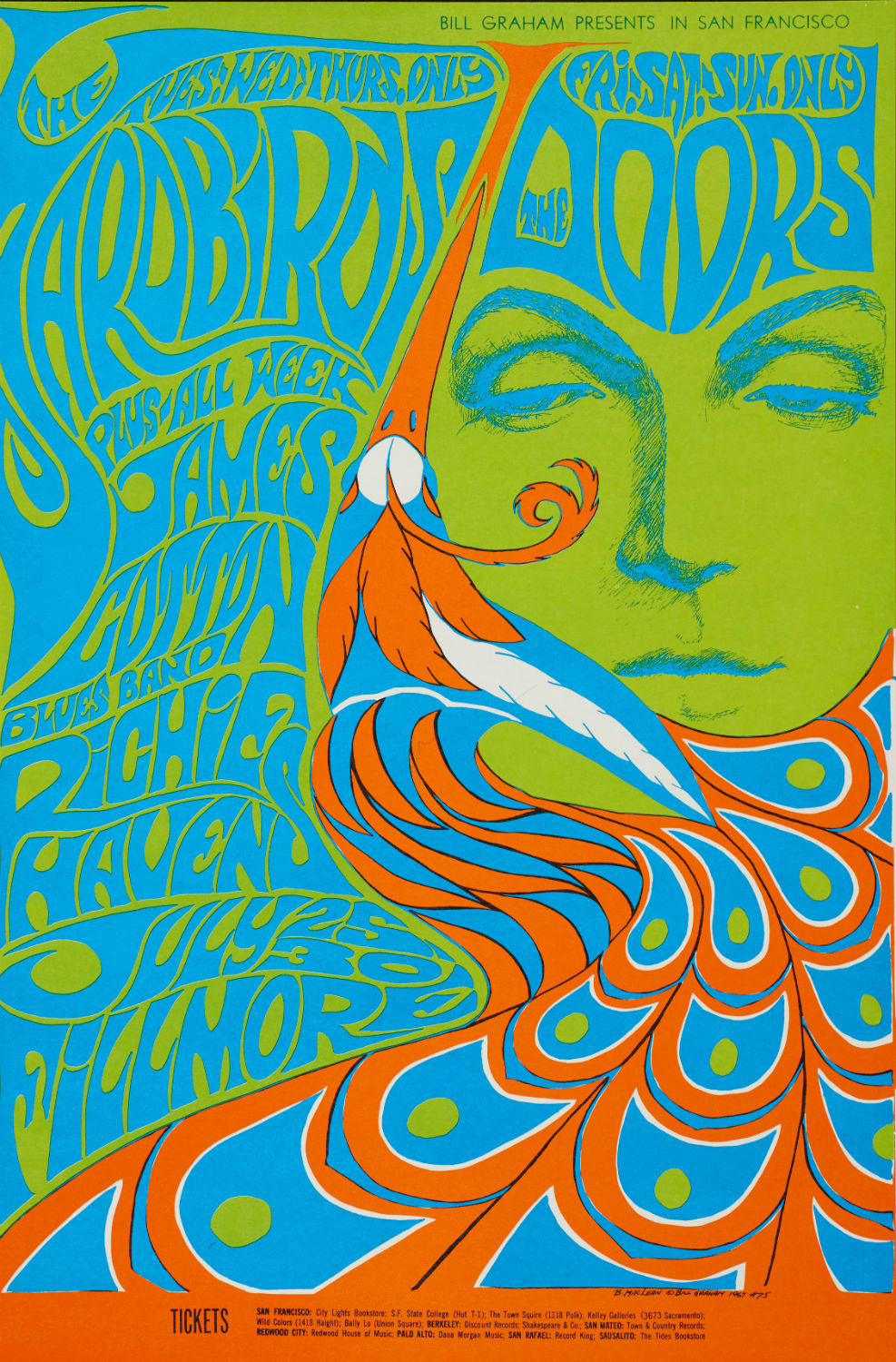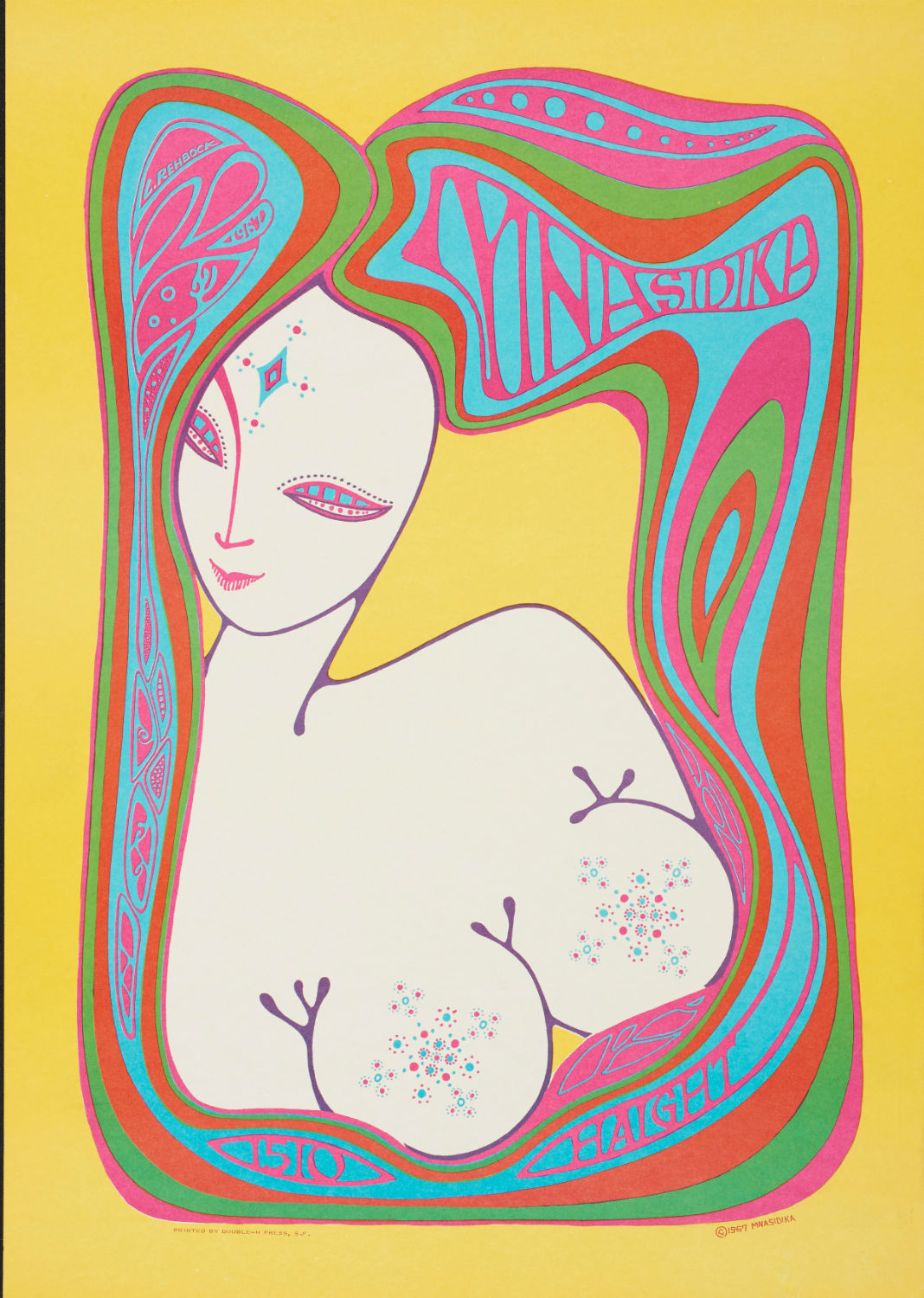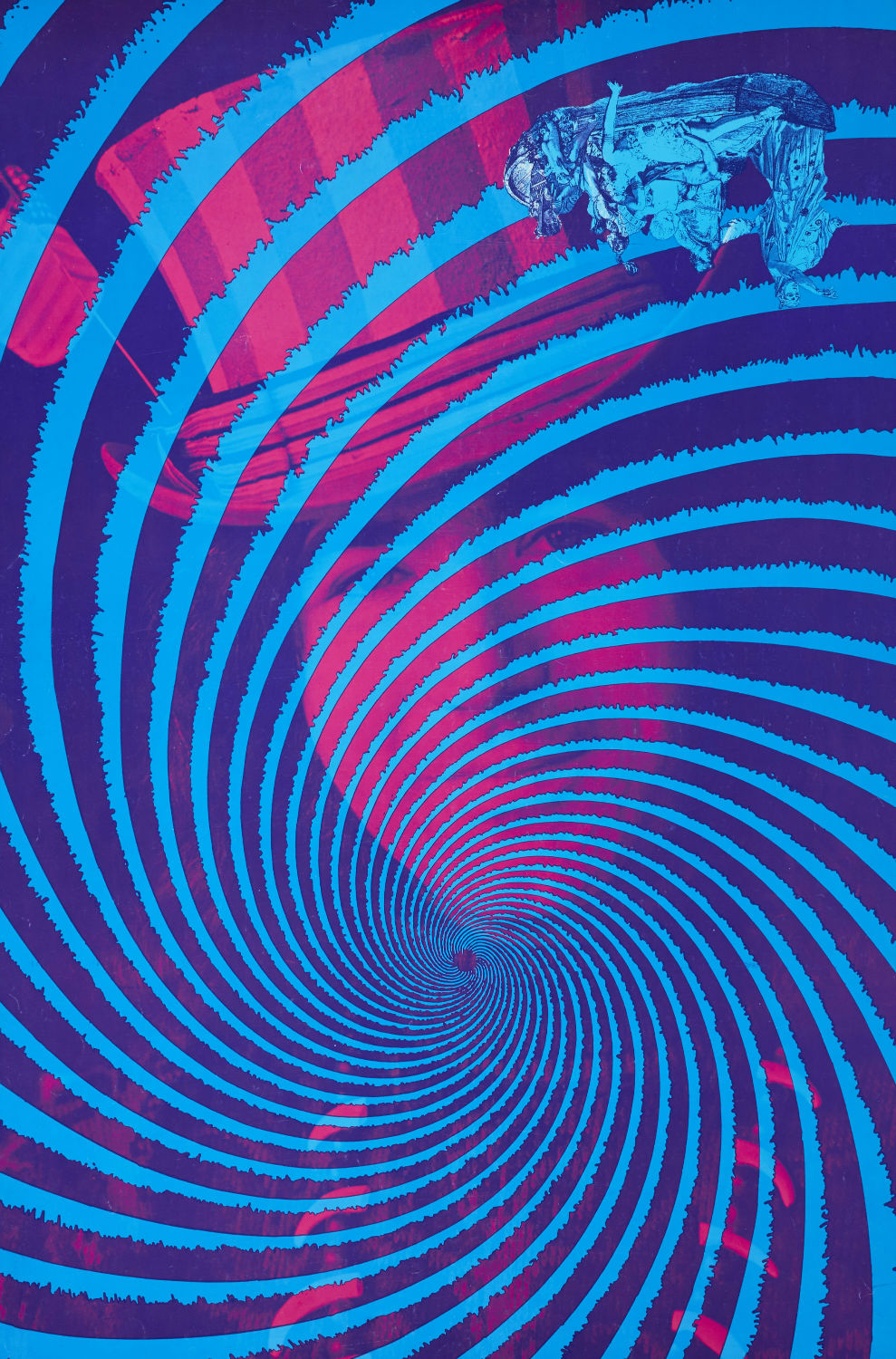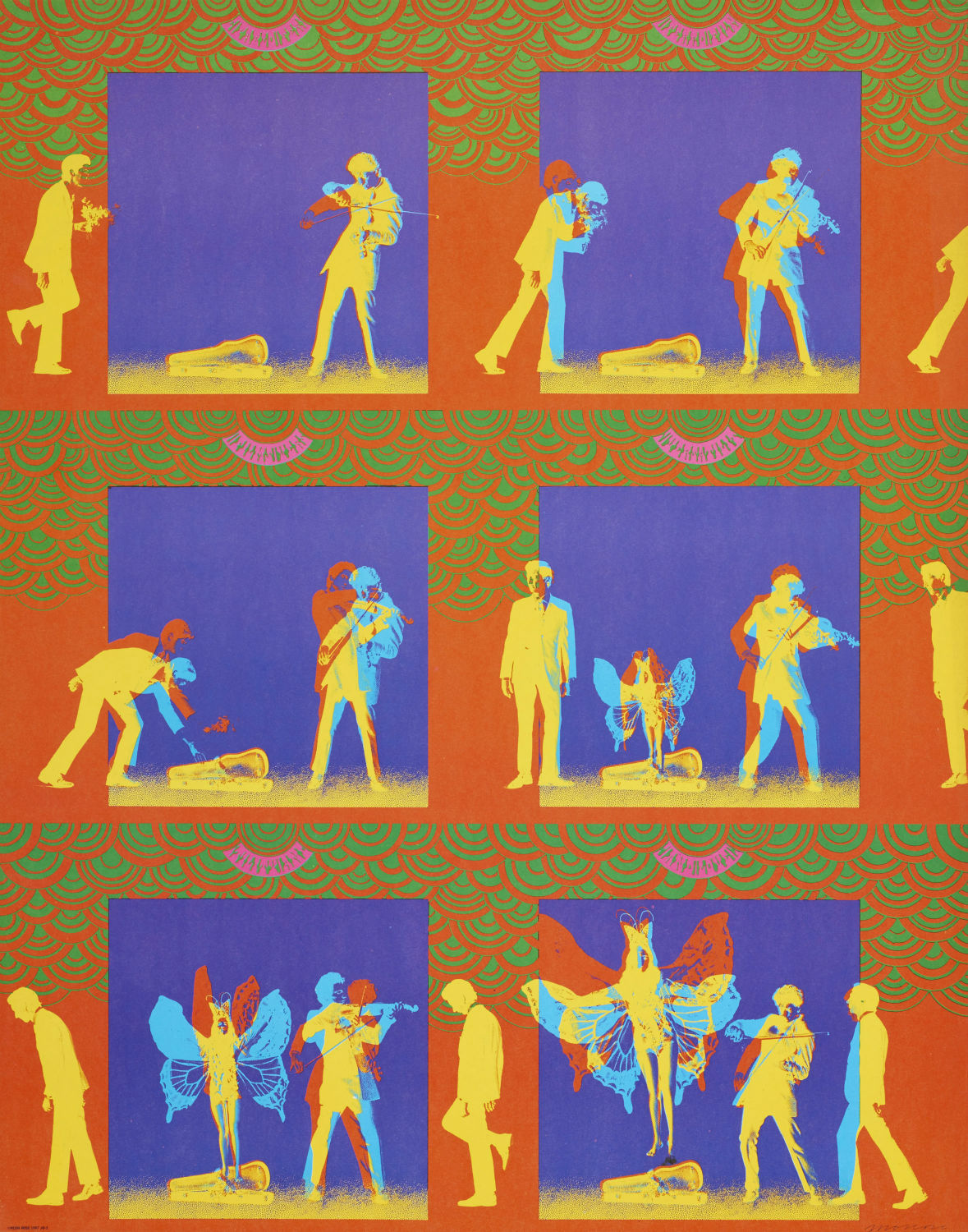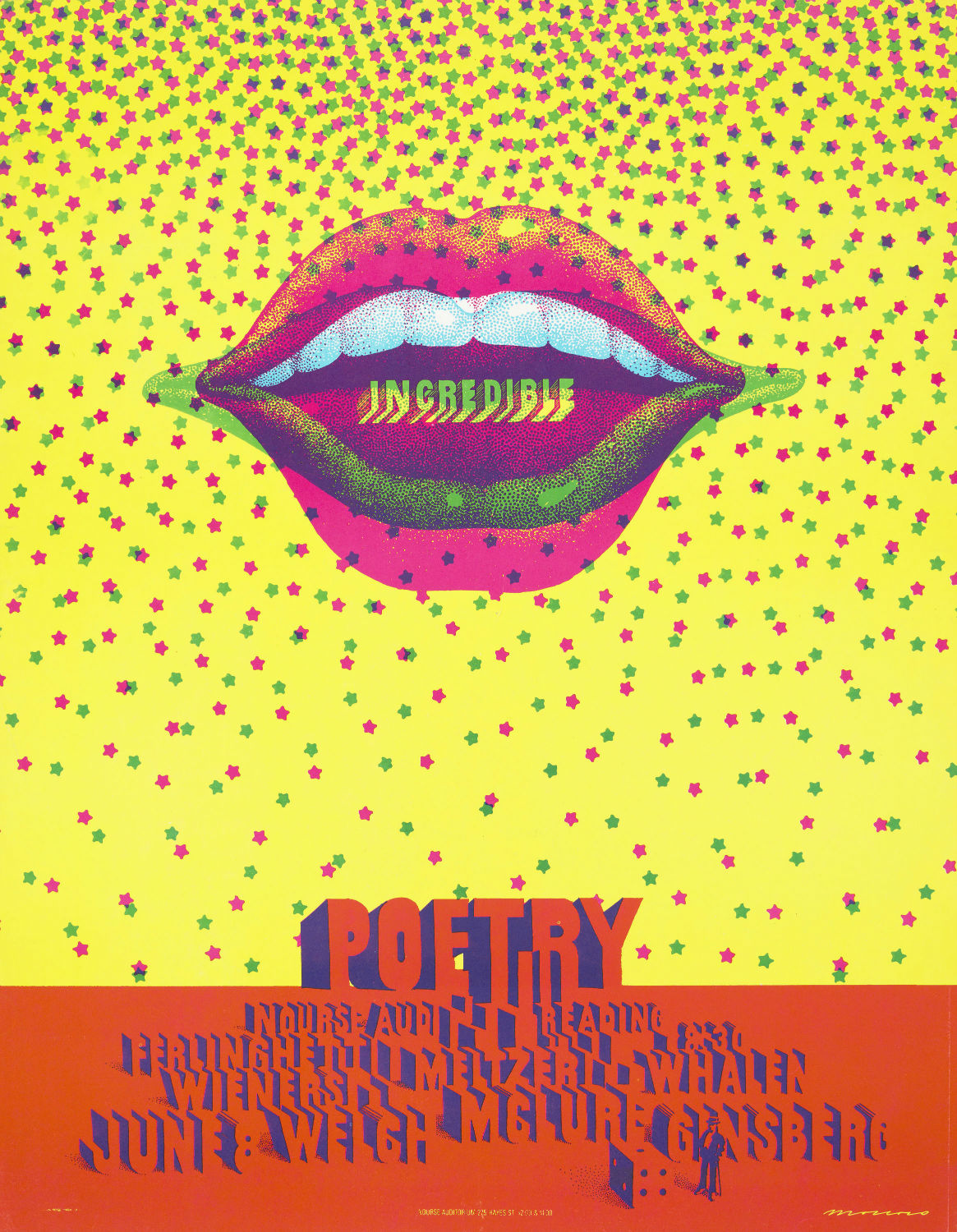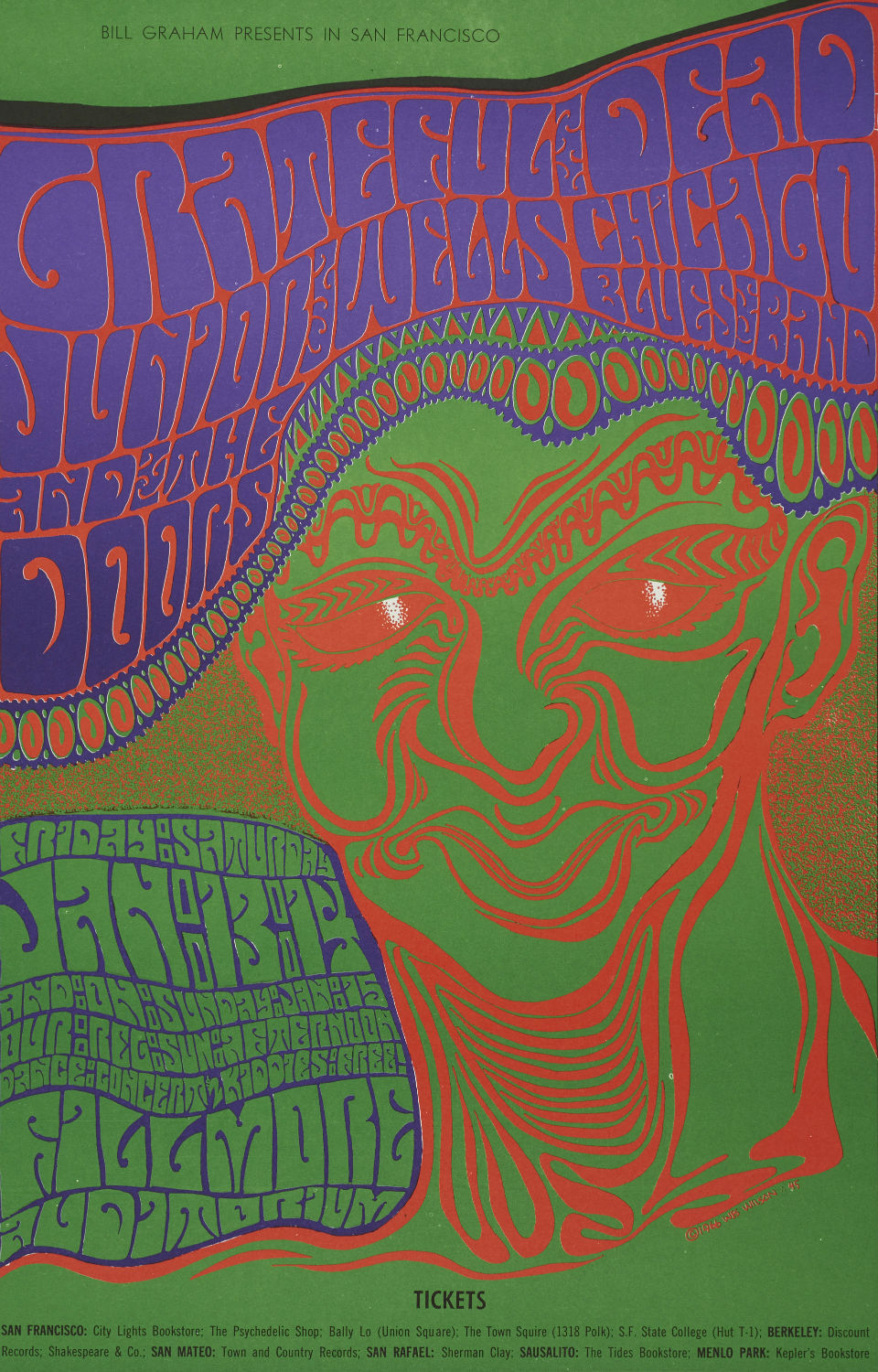Summer of love
Mind Expansion and Psychedelic Art Back Home in Golden Gate Park
Text by Fayette Hauser
Some might say that the counterculture movement began with the first hit of acid. Once your mind was blown, there was no turning back, and what emerged was a changed creature. There was a pattern to this change, and it happened gradually, like a three-phase operation. First, everything stripped away, as your own Great Truth was revealed, anything useless had to be eliminated, off came the clothes. There were so many naked people dancing in the sunshine of the park, throbbing to the band and light show, or just running around the house, that it became a common sight, actually a little boring!
The second phase bloomed as the spiritual change, which was inevitable. Intensity doesn’t begin to describe the permeation of profound thought forms that wafted throughout the City. It infused the air you breathed, like no other place, especially at night. San Francisco emerged as the playground of the freak, the stoner, the acid head. The cloak of evening bedecked bodies in wild whimsy. Wearable art was born on the street, sometimes in the gutter. The spiritual phases suffused the scene with swaths of colored fabric, and robes became essential gear. Pure color and textile, usually cotton, linen or silk, wrapped around one’s glorious form. Body consciousness was a big shift of the time. During the ’60s, fashion was graphic, coming out of the Bauhaus and Art Deco, making body perception very two dimensional. Twiggy was popular for a reason!
But flesh was In, and the spectacle on Hippie Hill in Golden Gate Park on any given day was unparalleled in the world, I’m sure. Bodies painted, swirling colored robes, flowers everywhere, little babies, people meditating, talking or standing on their heads for hours. And the drums, always, all the time, a drum circle of one or twenty which could be heard for blocks as one approached the park from Haight Street, a sight full of loving, joyous freakiness.

Phase three of the mind expansion process was individuation, and that’s when it got really interesting. If you were a brave soul and had survived the first two phases and didn’t run home crying to mommy (as the first two could get scary), you graduated into a headspace where the baggage of old ideas completely vanished. All bets were off, and the real individual emerged, sophisticated and sexualized. Choice was important in everything as it was all so sacred. You could immediately tell where someone was with one glance by reading their drag, the term “drag” referring to all clothing and related accoutrements, fashionable or otherwise. It became a matter of personal expressive choice, meant to reveal an inner fantasy, a mystery of belief.
We’re now at the half-century mark of the moment when it all burst open, when the youth movement blossomed into Hippiedom, and San Francisco became the nexus of the Revolution, 1967, the Summer of Love. Through August 20, 2017, the de Young Museum in Golden Gate Park in San Francisco will be hosting, appropriately, Summer of Love Experience: Art, Fashion, and Rock & Roll. In this exhibition, fine arts co-curators Jill D’Alessandro and Colleen Terry, along with Julian Cox, who helms the photography division, have scoured the Bay Area for original works of art, ranging from posters, photographs, handbills, music, clothing and fascinations.
D’Alessandro, the museum’s Fashion and Textile Curator, shared her thoughts on what she found most exciting about her treasure hunt in the trunks and attics of artists at the core of the wearable art movement. “What was most alluring to me was how wildly individualistic the pieces are, with traces of the personal philosophy of the artist.” (I certainly saw that in the work of crochet artist Birgitta Bjerke, who seemed to have brought her crochet hooks for a deep plunge in the acid pool!)
D’Alessandro was also struck by the high quality of the craft methods employed by the artists, pointing out, for example, the exquisitely made Zonkers Acid Test shirt. Many learned their skills at an early age from mothers and grandmothers. I remember, in grade school, taking home economics, where we were taught to cook and clean, skills that were foreign to me. Lots of hooked potholders came out of third grade, but I also learned to sew from my European grandmother. The DIY culture emerged naturally, as our generation placed a high bar on quality, and the aid of psychedelics honed in on detail! During the ’50s and ’60s, ready-to-wear was still a fairly young concept and we had no concept of the idea of disposable clothing! Making your own clothes from paper patterns was common, especially in rural areas. Paula Douglas aka Gretchen Fetchen is one such artist who honed her skills at the foot of her mother, growing up in Oregon.
As the counterculture in San Francisco grew, some artists made custom pieces and opened their own shops. Mickey McGowan made shoes that were so fabulous everyone wanted them. He became Apple Cobbler, doing boots and shoes for rock musicians and other style mavens with cash to spare and the patience to wait in line for the one-of-a kind pieces he was in no hurry to churn out. The Haight was an old working-class neighborhood filled with rundown Victorians, drafty and unpainted, waiting for the wrecking ball. However, the hippies were a smart and resourceful lot who appreciated their inherent beauty. These gorgeous, huge, high-ceilinged nineteenth-century flats offered architectural details and gracious gardens. Many people could live comfortably in one, growing organic in the backyard and decorating to their heart’s content. Every house had at least one sewing machine, several guitars and usually a pot of boiling water ready for tie-dye. Along with psychedelics came boundless energy that had to be expressed, and since the body held the soul, truth could suffice as attire. Unencumbered by trend or status, self-invention and transformation became fashion. The Family Dog, Big Brother and The Holding Company, the Grateful Dead family, The Brotherhood of Light and The Diggers are just some of the artists and activists who grew the movement from the ground up. Feeling close to the Earth, their look was natural and textural: earth colors, leather, lace and velvet. Pilgrimages for mushrooms in Mexico brought back the long skirts, peasant blouses and artisan jewelry of the Mexican women. The purity of ethnic tribes was so revered that adopting the visual language of their clothing was a form of homage, creating the genesis of what became the “hippie look.” One of the first artists to work in leather was Burey Olson, who came of age in the Beat scene and went on to open North Beach Leather. His designs, initially inspired by American Indians, were very popular for hippie men. Fringe, anyone?

The psychedelic society in San Francisco was a tight-knit group that exerted a tremendous effort to share ideas and evolve into an organic and positive way of life. Printed material, magazines, poster art and photography were vital means of communication. Some communes, like Kaliflower, had their own printing press, distributing weekly newspapers to your door, free, of course. The Diggers made a special effort to bend minds in the direction of a free, open and inclusive society. Every day, they brought a huge vat of soup to the Panhandle and fed the crowds, handing out handbills espousing their philosophy of free, more about a worldview than mere money. Magazines such as the Oracle and Rags, devoted to fashion, emerged, but most importantly, the Berkeley Barb, which disseminated community information and employed hippies who sold the newspapers.
Belief in reincarnation was widespread within, and living in Victorians enhanced the dream to immerse oneself within a fantasy and to be as complete with it as possible; to create a personalized wormhole, line it with velvet, and dive through to another dimension. The Family Dog was probably the first group to realize and fully materialize this psychic aspect of the counterculture experience. Their group, The Charlatans, began in the hippie outpost of Virginia City, a former silver mining boomtown that had become an isolated ghost town in 1964. It was then that a wealthy acid-head entrepreneur purchased the Red Dog Saloon so that the San Francisco bands had a place to play and hippies had a place to hang, unencumbered by the prying eyes of law enforcement.
The Charlatans were one of the first original acid rock bands of San Francisco and also the first to provide a rock concert poster (known as The Seed) as well as the first to manifest this desire for full immersion into another time and headspace, for them, the Wild West of the nineteenth century. They had all the gear and also the town (now being used as film sets). Original Family Dog member Marvin Banks relates that it was the utmost surreal experience, because not only did hippies and mountain men fill the saloon, but the town shacks still held accoutrements of daily life from long ago: dishes, cutlery, food cans on the shelves, a hammer or hair ribbon here and there. It was the ultimate time warp experience and many felt they had been there before.
Victoriana was the first significant drag transformation. For women, eliminating the underwear put soft silk and fine cottons next to skin. The details and construction, they way they held the body, was a revelation, accentuating waist and hips, which was quite different than the early ’60’s chemise. Men had never looked better, dressed in cut-away jackets or lounge coats of the Edwardian era. Women gradually added back the lingerie, but this time, it was worn on the outside. And at this time, San Francisco embarked on urban renewal, an attempt to reinvent the City. Sound familiar? Victorians were bulldozed, and whatever was found in the attics and basements went into thrift stores and flea markets to dress one’s dreams.
No one is quite sure how the tie-dye became so popular, but I suspect that it was similar to the attraction to Victorian finery, as both were cosmic. Mysticism was very popular at the turn of the century, and this technique gave way to the dreamiest of impulses. Antique tie-dye became so popular that the basement of the Diggers Free Store was given over to boiling dye vats for classes in the technique taught by Luna Moth. Anyone could do it, and the color possibilities were, indeed, cosmic.
Julian Cox regards the over-arching theme of the de Young exhibition to be the cultural revolution spearheaded by the medley of artists and creative thinkers in the Bay Area at the time. “This exhibition is a manifestation of activism through creative expression.” Many early artists of the era arrived with an art school education and put it in practice, well-versed in art history with the LSD experience adding a new dimension. Late nineteenth- and early twentieth-century European movements, particularly Art Nouveau, as well as reverence for nature and sensual form, provided impetus. The poster artists drew from this knowledge, yet made it their own to produce the beautiful art that graced every commune wall.
The 1966 Trips Festival, deemed by Cox as, “the fulcrum of the movement,” is considered to be the prime catalyst for the psychedelic concert experience, and an entire room at the de Young is devoted to the three day event. Bound by LSD, experimental groups played around with various elements that, when activated together, would produce a fabulous high. Bill Hamm and Ben Van Meter worked on light projections. Stewart Brand, one of the producers, brought in Ken Kesey with the Further bus full of Pranksters, who toted their Acid Test, this time with tubs of ice cream laced with pure LSD. Brand and Native American friends set up Indian teepees with slide shows projected on the walls of the tents. Ramon Sender from the Tate Music Center worked with experimental music, layering sounds on eight-track tape. Alexandra Jacopetti Hart and her then-husband Roland from Open Theater and Gallery in Berkeley staged a play called Goodbox, not to mention a strobe light and white noise machine. Athlete Don Millman set up a trampoline under the dome in the center, and “When he jumped high,” according to Alexandra, “you could see him anywhere in the hall… as if he just appeared, mid-air, lit only by the strobe.”
Prior to the Trips Festival, the groups had gathered together only on a small scale. When lines formed around the block, everyone was stunned at the sheer size of likeminded folk, and so, it was a turning point. But the stars of the show were, indeed, the bands: The Warlocks, who became the Charlatans, Big Brother and the Holding Company and The Grateful Dead. With Hamm’s light projections, the room coalesced into the same beat. Shortly before, Bill Graham had held a benefit concert at the Fillmore for the San Francisco Mime Troupe, who staged their satirical and political plays at Dolores Park. Since no one wanted to handle the money, the festival producers asked Bill, and as Alexandra remembers, every time she saw him, he was counting money. By the second day, Bill saw the future and rented the Fillmore for the following weekend.
Artistry and individuality was a very important factor in counterculture, and by the time I arrived in San Francisco in the Fall of 1968, a definite chic had emerged. I was blown away by how beautifully unique everyone looked. There were barely any references to the mainstream, and anyone new to the scene could get transformed at The Diggers Free Store. Even at parties, there would be someone beading, weaving or crocheting, for even in a high-altitude Zen space, the artisan abided.
The wearable art movement came out of a shared vision of a greater landscape than what was presented in the late ’50s and ’60s. A post-World War II generation took a long look back at the elements of the material and spiritual culture that had been discarded by the painful emotional baggage of the recent past. Everything was whitewashed and painted over in a new palette of primary colors. But the next wave had no such memory, and so, re-examined these elements with new eyes. Jacopetti Hart’s Native Funk and Flash is recognized as the bible of the Wearable Art Movement, where classic methods of embroidery, crochet, fabric collage and assemblage were reborn to create the self-transformed. Fashion was the identifier—clothes, amulets, jewelry, hats and all—to illustrate the inner journey being experienced. There was no end to the supply of items that poured out of thrift shops and especially the Alameda Flea Market. Going there after a night tripping at Winterland was another cosmic experience that reaped great treasure. General Bead in Minna Alley was the place for beads, and they are still in business. The Mystic Eye in North Beach provided candles, incense and all things occult for the spiritual. Distractions on Haight began in the early ’70s, the oldest continuous head shop in the City and still mainly features local designers
Jill D’Alessandro’s essay illustrates the common thread of cosmic consciousness that pervades the exhibition, showing how connections and patterns vitally expressed new ideas. Creating art was like breathing to the hippie. Alexandra’s embroidered jeans, Candace Kling and her husband Fred’s painted fabric sewn into long dresses, the pioneering macramé and metalwork jewelry all depict marvelous inner journeys. Each garment displayed in this exhibition has a story to tell.
The Summer Of Love was the catalyst that galvanized my generation into a group consciousness that produced an enormous and uncompromising output of cultural and creative change. Those who were fully immersed in the society and in the consciousness felt that our primary job, the most important job that we had, was to explore the psyche in order to positively evolve the Soul. And to do this with love and above all, non-violence. And we sure had fun doing it. Our group, The Cockettes, began at the peak of the movement’s flowering, the early ’70s. All the shared ideas were in full swing by then, and our group pushed them even further. Psychedelics were still very much in favor, and the surreal dimension that LSD provided fueled our lives and our performances on stage.
The de Young exhibition offers a keyhole peek into the artistry and aesthetic of this movement, and looking deeper into the message of the cultural revolution can provide a way of seeing the world that is beautiful, sustainable, inclusive and so full of great personal freedom, anything is possible.

